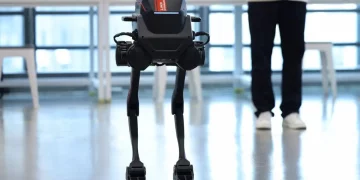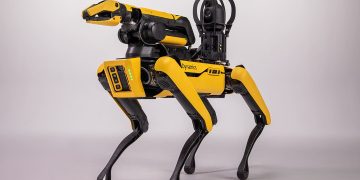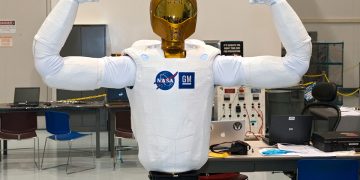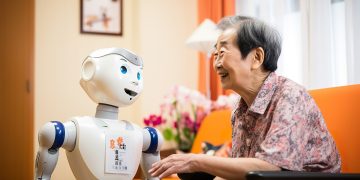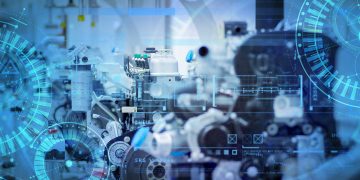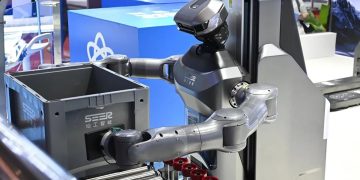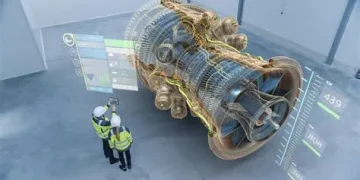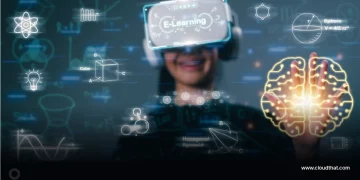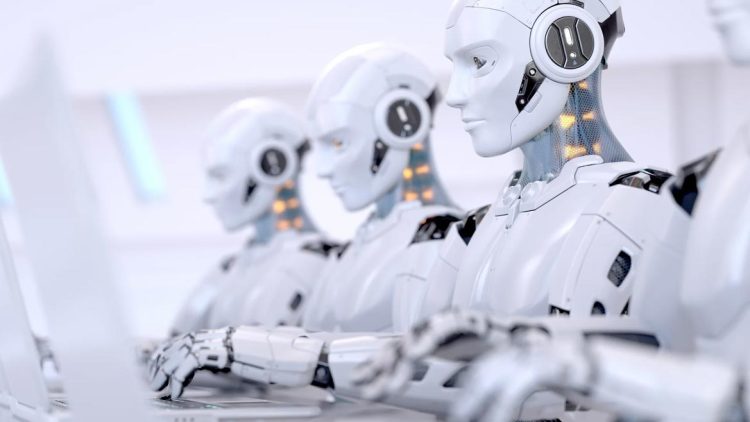When catastrophe strikes—an earthquake flattens a city, a nuclear plant leaks radiation, or a mine collapses miles underground—human rescuers face unimaginable dangers. In these moments, speed, precision, and endurance can make the difference between life and death. But what if the first responders of the future weren’t human at all? What if humanoid robots—machines with our shape, mobility, and decision-making ability—could take on the most perilous missions, venturing where no human safely can?
By 2050, this vision may become reality. The fusion of advanced AI, robust materials science, and adaptive robotics is pushing us closer to a new era of humanoid rescue agents—machines designed not just to obey commands, but to act autonomously, ethically, and empathetically in complex disaster zones. Yet this transformation comes with major challenges: designing machines durable enough to survive chaos, intelligent enough to operate independently, and trustworthy enough to make ethical choices in life-and-death scenarios.
1. Why Humanoid Robots Are Ideal for Disaster Response
When disaster strikes, the environment is unpredictable: debris shifts, toxic gases spread, and communications fail. Traditional rescue robots—like drones, wheeled rovers, or tracked vehicles—excel in specific tasks but struggle with complex terrain and human-scale environments.
Humanoid robots, by contrast, are built in our image. They can climb stairs, open doors, carry victims, and use tools designed for human hands. This makes them uniquely adaptable for navigating collapsed buildings, tight corridors, or chemical facilities designed for human operation.
Their key advantages include:
- Mobility and Dexterity: Bipedal locomotion allows humanoids to traverse uneven terrain, rubble, and staircases that wheeled robots cannot.
- Human-Compatible Tools: They can operate standard rescue equipment—hoses, power tools, communication devices—without the need for custom redesigns.
- Psychological Familiarity: For survivors, seeing a humanoid figure (even a robotic one) can provide reassurance and comfort in moments of chaos.
- Autonomy in Communication Dead Zones: In areas where radio signals are jammed or GPS is unavailable, humanoids equipped with onboard AI can make critical decisions locally.
As one robotics engineer put it, “The more human-like the environment, the more human-like the robot must be to navigate it effectively.”
2. Key Use Cases: From Earthquakes to Nuclear Disasters
A. Earthquake Response: Searching the Rubble
In earthquake zones, collapsed structures create an almost impossible environment for human rescuers—unstable debris, dust, and narrow voids. Humanoid robots equipped with 3D LIDAR scanners, thermal imaging, and acoustic sensors can detect faint signs of life, such as breathing or body heat, under tons of concrete.
They can then carefully remove obstacles or stabilize structures before humans enter. In Japan, prototypes like Kawada’s HRP series and Honda’s ASIMO derivatives are being tested for post-seismic reconnaissance and victim transport.
Future models may include modular limb attachments—arms that can transform into drills, supports, or cutting tools depending on mission needs.
B. Nuclear Leaks and Hazardous Sites
In radioactive or toxic environments like the Fukushima Daiichi nuclear plant, human access is extremely limited. Radiation-resistant humanoids can be deployed to monitor reactor conditions, seal leaks, or collect samples.
Their ability to mimic human gestures and handle familiar controls allows them to interact directly with existing infrastructure. The T-HR3 by Toyota and Boston Dynamics’ Atlas are precursors to this concept—remotely operated humanoids capable of functioning under extreme physical stress.
In the long term, humanoid robots might serve as permanent site guardians, continuously monitoring high-risk zones like chemical waste storage facilities or deep-sea oil rigs.
C. Deep Mines and Subterranean Missions
Mining accidents remain one of the most lethal disasters worldwide. When oxygen levels drop and visibility vanishes, humanoid robots could descend into tunnels to deliver supplies, assess damage, or retrieve trapped miners.
AI-powered navigation using SLAM (Simultaneous Localization and Mapping) allows these robots to operate without GPS, while multimodal sensors help them interpret environments filled with dust, water, and darkness.
Their human-like proportions are essential: mining tunnels are often built for human passage, not bulky machines. A humanoid robot can fit through narrow shafts and manipulate human-scale equipment like ladders and switches.
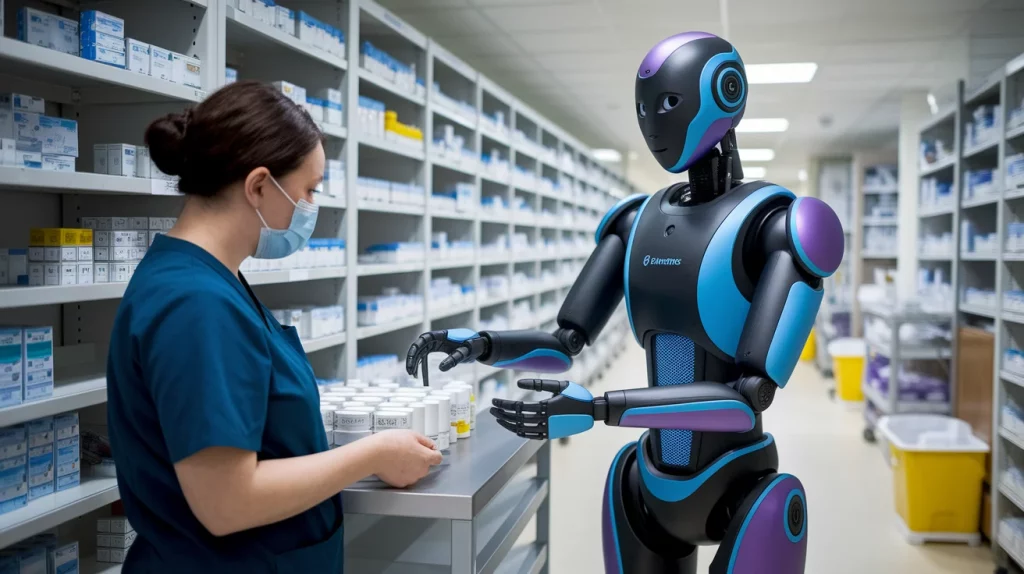
3. Engineering and AI Challenges: Building the Indestructible Rescuer
Creating a humanoid capable of performing reliably in disaster zones is a monumental engineering challenge. Every aspect—hardware durability, sensory precision, and AI autonomy—must be optimized for survival in chaos.
A. Durability and Structural Design
In rescue operations, robots must endure heat, impact, water, and radiation. Future humanoids will use lightweight yet high-strength alloys (like titanium composites), heat-resistant carbon-fiber shells, and shock-absorbing joints.
To maintain balance in unstable terrain, humanoids rely on gyroscopic stabilization systems and real-time motion correction algorithms, similar to those used in aerospace navigation.
Battery life is another obstacle. Rescues can last hours or days, far exceeding current lithium-ion capacities. By 2050, we may see hydrogen fuel cells or micro-nuclear batteries providing continuous power for mission-critical operations.
B. Sensory Intelligence and Autonomy
Humanoid robots must see, hear, and feel their surroundings. This requires sensor fusion—combining data from cameras, infrared sensors, microphones, LIDAR, and tactile sensors into a coherent situational map.
Advanced AI models will then interpret these sensory inputs to detect survivors, assess risks, and prioritize actions. The next generation of AI will integrate multimodal deep learning and reinforcement learning, allowing humanoids to adapt in real time to unpredictable conditions.
Autonomy is vital: in many disasters, communication with human operators is intermittent or impossible. Robots must make independent judgments—whether to risk entering a collapsing structure, how to stabilize debris, or when to retreat.
C. Human-Robot Collaboration
Even as humanoids gain autonomy, human oversight remains essential. Future systems will operate under a “human-in-the-loop” model—robots make tactical decisions, while humans provide strategic guidance and ethical judgment.
This requires seamless brain-computer interfaces (BCIs) or haptic feedback suits, enabling rescuers to “feel” what the robot feels. Imagine a rescue commander controlling a humanoid from miles away while sensing pressure, temperature, and motion through a tactile VR interface.
4. Ethical Trade-offs: When Machines Take Risks Humans Cannot
Deploying humanoid robots in disaster zones raises profound ethical questions about autonomy, accountability, and empathy.
A. Should Robots Take Risks Humans Wouldn’t?
If a robot is sent into a collapsing building, how much risk is acceptable? Should it sacrifice itself to save a human life?
Unlike drones or machines, humanoid robots may one day have decision-making algorithms that simulate ethical reasoning. This leads to the possibility of “moral programming”—coding empathy and altruism into their decision trees.
However, programming ethics is not simple. Should a robot prioritize saving more lives, or obey direct human commands? What if those two goals conflict? Future frameworks may rely on ethical AI modules that balance utilitarian outcomes with human oversight.
B. Who Bears Responsibility for a Robot’s Decisions?
If a humanoid accidentally causes harm—say, dislodging debris that injures a survivor—who is responsible? The programmer? The operator? The robot itself?
Legal scholars suggest the development of “AI liability layers”, assigning responsibility among stakeholders. As humanoid autonomy increases, these layers will become crucial to maintaining public trust.
C. Human Oversight and Emotional Impact
Finally, the emotional dimension cannot be ignored. Rescuers often describe their work as deeply human—driven by compassion and instinct. Replacing humans with machines risks dehumanizing the act of saving lives.
To address this, humanoid robots must not only perform efficiently but also embody empathy through design and behavior. A calm voice, gentle gestures, and human-like eye movement can comfort survivors in crisis. Emotional intelligence—whether simulated or real—will be a core component of rescue robotics.
5. Future Technologies Powering Humanoid Rescue Missions
The next generation of humanoid rescue robots will integrate cross-disciplinary innovations, merging biology-inspired design with computational intelligence.
- Soft Robotics: Flexible actuators mimic muscles and tendons, allowing robots to squeeze through tight gaps or absorb shocks.
- Adaptive Skin Sensors: Artificial skin layers embedded with pressure and temperature sensors enable tactile interaction and heat detection.
- AI Swarm Coordination: Multiple humanoids can coordinate autonomously, forming rescue “teams” that map environments and share data in real time.
- Quantum AI Processors: Faster computation enables near-instant risk assessment and motion correction.
- Biohybrid Systems: Robots with synthetic muscle tissue or bioengineered energy cells for greater flexibility and efficiency.
By 2050, these technologies could make humanoid robots not just tools but intelligent partners—extensions of human empathy, courage, and resilience.
6. Global Perspectives: Where Humanoid Rescue Robotics Is Heading
- Japan: Leads in disaster robotics, investing heavily post-Fukushima in humanoid response systems like HRP-5P and Kenshiro.
- United States: Focused on defense and DARPA-led programs (e.g., Robotics Challenge), which have accelerated mobility and autonomy technologies.
- Europe: Emphasizes ethical frameworks and cross-border AI regulation, integrating robotics with human-centered design principles.
- China: Rapidly expanding industrial humanoid programs aimed at manufacturing and public safety, with applications expected to evolve into disaster management.
By the mid-21st century, international humanitarian organizations may deploy standardized humanoid rescue units under UN coordination, establishing a new class of “AI first responders.”
7. Toward a Symbiotic Future of Rescue
Humanoid robots will never replace the compassion and intuition of human rescuers—but they can extend human capability into places too dangerous for life. Together, human and machine can form a symbiotic partnership: humans providing emotional intelligence and judgment, robots providing endurance, precision, and courage without fear.
In the words of one futurist, “Humanoid robots won’t take our place in saving lives—they’ll help us save more.”
By 2050, rescue operations may look like scenes from science fiction—teams of human and robotic responders working side by side amid smoke, darkness, and ruin, guided by shared purpose. The ultimate goal is not to make robots more human, but to make humanity stronger through them.





